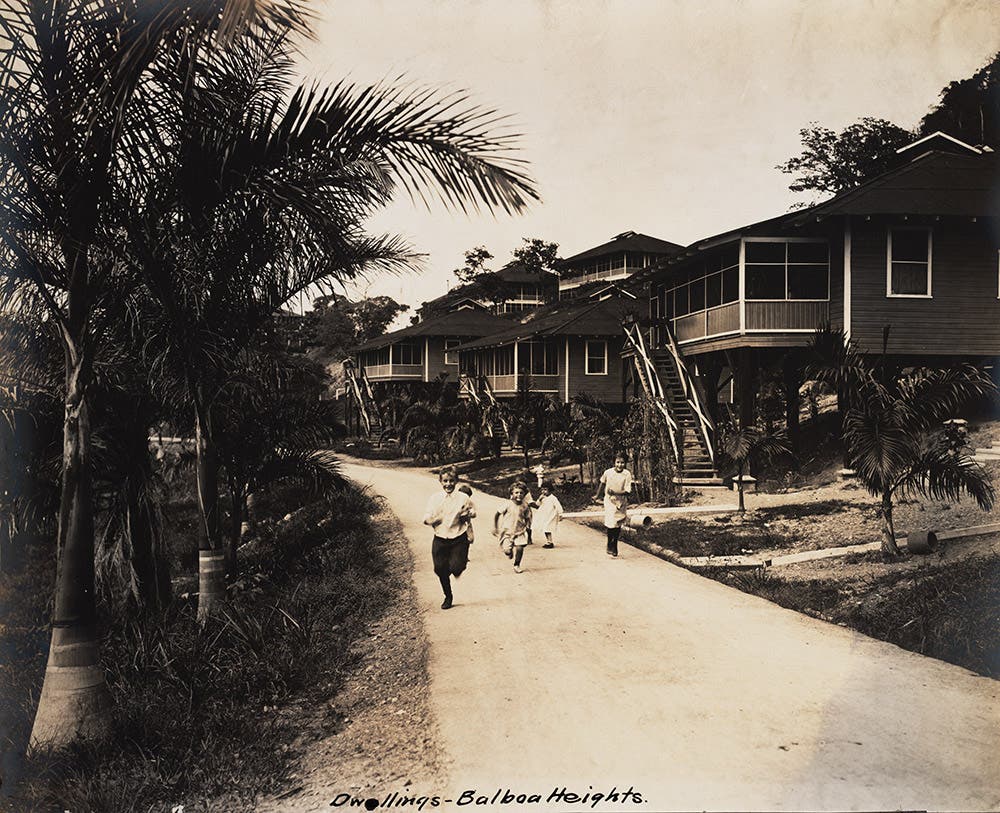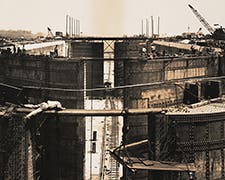Life in the Zone
“Nearly every steamer brought white men, wanderers over the face of the globe. [Men]came from S. Africa, from Australia, from Alaska, from the Philippines, from China, and especially from the Spanish American republics.” -A.B. Nichols

Modest housing at Balboa for gold payroll workers. Image source: Nichols, Aurin Bugbee, and Tirzah Lamson Nichols. Panama Canal Collection, 1846-1923 (bulk 1906-1914). Photograph Album 3, p. [101].
Gold payroll employees were encouraged to bring along wives and children, who were seen as a civilizing influence.
From 1904 to 1915, the Americans hired a workforce of 42,000 to build the Canal. At the beginning of construction, hiring workers at all levels was a difficult task. The Isthmian Canal Commission recruiters sought to fill the skilled jobs in America, offering good monthly salaries and free transport to the Isthmus, but many of the original recruits were unable to do the jobs for which they had been hired. Also, frightened by yellow fever and unable to face the harsh environment, half of the Americans fled the Canal during the first year of construction.
Although workers arrived from around the world, the Caribbean islands, primarily Barbados, supplied the bulk of the labor force. It was first believed that the islanders were unproductive by nature, but times were tough in their home countries and many were simply malnourished. Once fed a more varied and nutritious diet and given sufficient training, they performed well. However, the preparation of the food was, by most accounts, awful.

